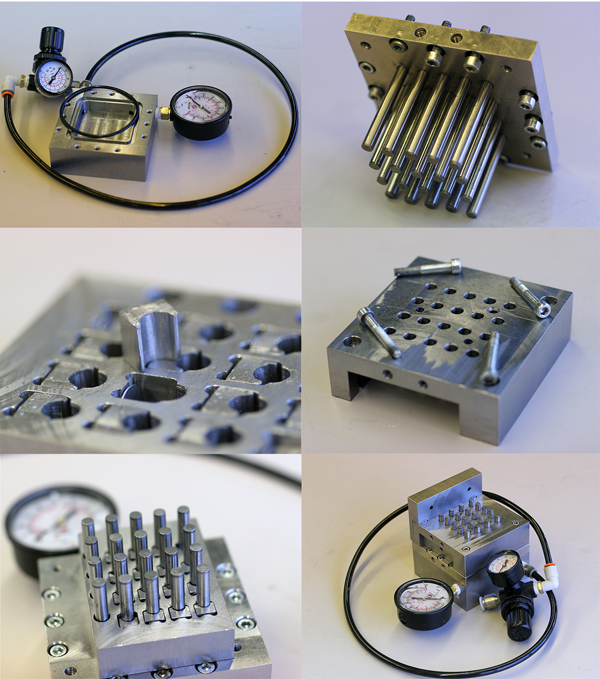
Teaching
Resources
Design And Testing Of An Adaptive Machining Fixturing System For Surface Grinders
Xiaofan Xie, M.S. University of Utah, December 2004
This project focuses on the various design aspects involved in the making of an adaptive fixturing system for surface grinders. The grinding of the workpieces with large aspect ratios is often time consuming due to the elastic stresses that occur during the clamping of the workpiece, which cause the loss of geometric accuracies once the workpiece is released from the fixture. Even more difficult is the fixturing of an irregularly shaped workpiece whose shape is incompatible with standard fixturing systems. The solution to this problem is a mechanical fixturing system that can adapt to the shape of the workpiece. By doing so, elastic stresses due to deformation are avoided and the system is capable of fixturing workpieces that would otherwise be impossible to hold during machining.
Discussed are the design process and experiments for the prototype of the design of a universal adaptive machining fixturing system, which may serve as a sub system for a surface grinder or other similar applications. Pro/ENGINEER, a computer aided (CAD) design tool, has been used for the concept generation during the design stages. Engineering drawings of the individual components were created using the same CAD tool. Static analysis results obtained with Pro/MECHANICA (analysis module of Pro/ENGINEER), help justify the final design. LabVIEW, a graphical programming language, has been used for obtaining the experimental results from the design prototype, and also to analyze the experimental data.


